MV Glen Rosa, the second of two dual fuel vessels being built at Ferguson Marine in Port Glasgow, was successfully launched into the Clyde this week.
Like her sister vessel MV Glen Sannox, MV Glen Rosa is being built on behalf of Caledonian Maritime Assets Limited (CMAL) to service the Arran route.
The 102-metre, roll-on/roll-off vehicle passenger ferry will be capable of operating on liquefied natural gas (LNG) and marine gas oil (MGO). MV Glen Rosa is designed to carry 127 cars, 16 HGVs – or a combination of both – and up to 852 passengers. She is due to be completed by September 2025.
The launch party was made up of Wellbeing Economy Secretary Màiri McAllan; Ferguson Marine interim chief executive John Petticrew; Rev William Boyle, Minister at St. Andrew’s Church of Scotland, who blessed the vessel; and five female apprentices employed by the shipyard.
Beth Atkinson, a qualified welder who completed her apprenticeship at the yard, smashed a special bottling of Ardgowan blended malt whisky off the vessel’s hull to officially name her as MV Glen Rosa before she entered the water for the first time.
An open invitation was extended to the people of Inverclyde to attend the launch, welcomed to the yard on a first come, first served basis. Many hundreds more watched the event from the nearby Coronation and Newark Castle parks. I was lucky enough to be invited to the media enclosure but couldn’t make it on the day.
John Petticrew, interim chief executive at Ferguson Marine (Port Glasgow), said:
“This is a proud day for the shipyard, the people of Inverclyde and every individual who has supported Ferguson Marine reach this landmark moment. MV Glen Rosa is the 363rd vessel launched on the Clyde under the Ferguson Marine name. At around 3,000 tonnes, she is considerably heavier than her sister vessel MV Glen Sannox was at launch and sets a new record for the yard in terms of weight at launch.
Today marks a significant milestone in the delivery of the two new ferries, following the success of MV Glen Sannox’s sea trials in February and last week. This demonstrates the hard work being done by everyone at the yard to complete both ferries as soon as possible. MV Glen Rosa will now take her place at the quayside, at the spot Glen Sannox recently vacated, so that her internal fit out can continue.”
Wellbeing Economy Secretary Màiri McAllan said:
“This is an important milestone for the shipyard and, importantly, provides an opportunity to recognise the workers who have contributed to the building of the MV Glen Rosa. It is fitting that it was launched by Beth Atkinson, a highly skilled welder who trained at Ferguson Marine, and who represents the future of Scottish shipbuilding. I was pleased to be able to join such an important event for the community, and look forward to seeing Glen Rosa enter service next year and provide vital lifeline services for our island communities.”
Kevin Hobbs, chief executive, CMAL said:
“It is a welcome sight to see Glen Rosa successfully launched and enter the water today. This is a step in the right direction for the two dual fuel vessels, with MV Glen Sannox completing a dry docking and further builder’s trials last week. We know how important these two vessels are for the Arran community, and for both vessels to start serving the island. We will continue to work with Fergusons to get them delivered as soon as possible.”
Duncan Mackison, interim CEO of CalMac, said:
“Today’s successful launch is a positive step forward and we are looking forward to welcoming MV Glen Rosa into the CalMac fleet. When she enters service, she will provide much-needed resilience and capacity to the Arran community.”
The five female employees who were on the launch platform are:
Beth Atkinson (28): commenced apprenticeship in September 2020 and qualified as a welder in August 2023. She is currently undertaking an HNC in fabrication and welding. Beth is believed to be the first Ferguson employee to officially name and launch a vessel. Beth said: “It was a privilege to launch the vessel. I’ve never seen a ship launch before today.”
Jennifer Mackay (28): commenced apprenticeship in August 2016 and qualified with an SVQ3 in engineering technical support in May 2020, when she moved to the role of draughtperson. Jennifer was promoted to outfitting team lead in March 2022 and is currently undertaking a graduate apprenticeship in engineering: design & manufacture at the University of Strathclyde. Jennfier said: “I felt proud watching the ship go into the water. I’ve worked at the shipyard since work started on the vessel.”
Rachel McLaughlin (26): commenced apprenticeship in August 2016 and qualified as a plater in May 2020. Moved to the engineering department as a loftsperson in August 2020 and is currently undertaking a graduate apprenticeship in engineering: design & manufacture at the University of Strathclyde. Rachel said: “It was an exciting moment, and it’s great for the local community. My family are really proud that I’ve been involved in today’s launch.”
Kirsty Graham (25): commenced apprenticeship in August 2016 and qualified as a plater in August 2019. She was internally promoted to a trainee manufacturing engineer in March 2022. Kirsty said: “I was both excited and nervous watching the vessel launch. It’s a big step in the right direction.”
Teigan McShane (19): commenced apprenticeship in September 2022 and is currently working towards an SVQ3 in engineering technical support. Tiegan said: “It was great to see the vessel going into the water. A great moment for the shipyard.”
Why is this being published in the UK Defence Journal?
Some might be asking, why is a defence news website updating readers about ferries? The UK Defence Journal is committed to providing comprehensive coverage of naval shipbuilding and the broader maritime defence industry. This includes a dedicated focus on civilian shipbuilding activities, a sector that significantly influences and supports the naval defence landscape. The integration of civilian shipbuilding coverage reflects our understanding of the sector’s strategic importance, where advancements and capacities within civilian yards often directly contribute to the capabilities and flexibility of naval defence projects.
Furthermore, the health of these shipyards is of national strategic interest, underpinning the UK’s ability to sustain a dual-capable maritime industry that serves both commercial and defence purposes.


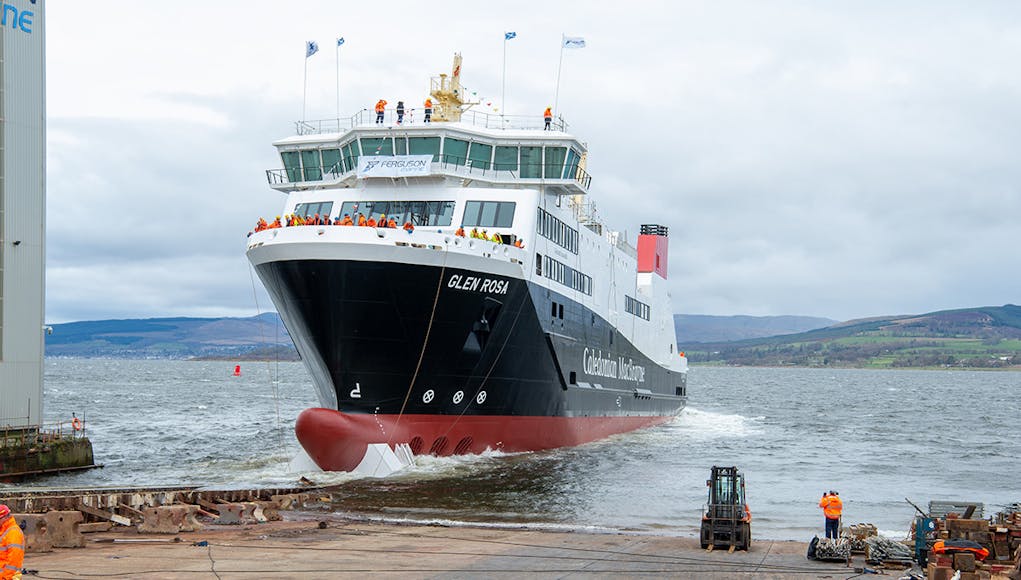




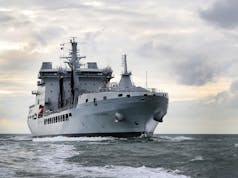
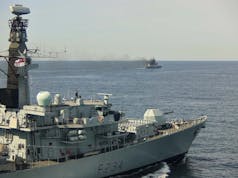
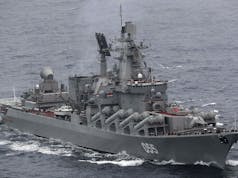
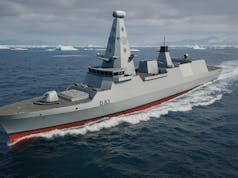

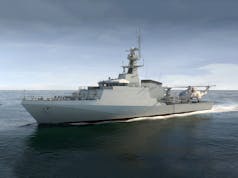

Good news – at long last! The coverage of this story bu UKDJ is important to know since this yard, if progress can be made on all of its operations and systems, would be useful addition to U.K. national maritime industrial capacity. I wish Fergusons well.
Nice looking vessel too. Very well done 🇬🇧 🛳 building.
I think it needs up-gunning. Especially in light of current threats. A few Sea Ceptor cells and Phalanx would be a start.
Now that’s a thought, optionally manned large arsenal ship and repaint it grey!! Even as a ro-ro might have some uses for smaller logistics ops.
Mazeltov, Furguson!
Scotland needs ferries. Let’s hope Turkey is never again the Scottish government’s first port of call.